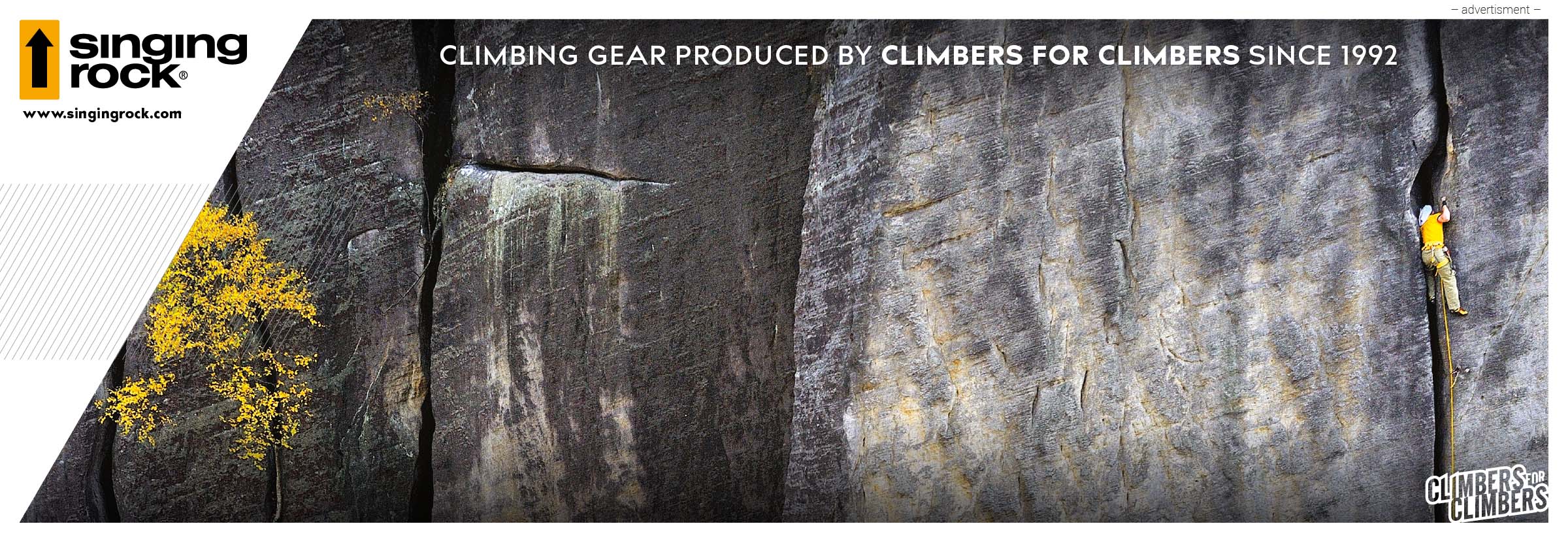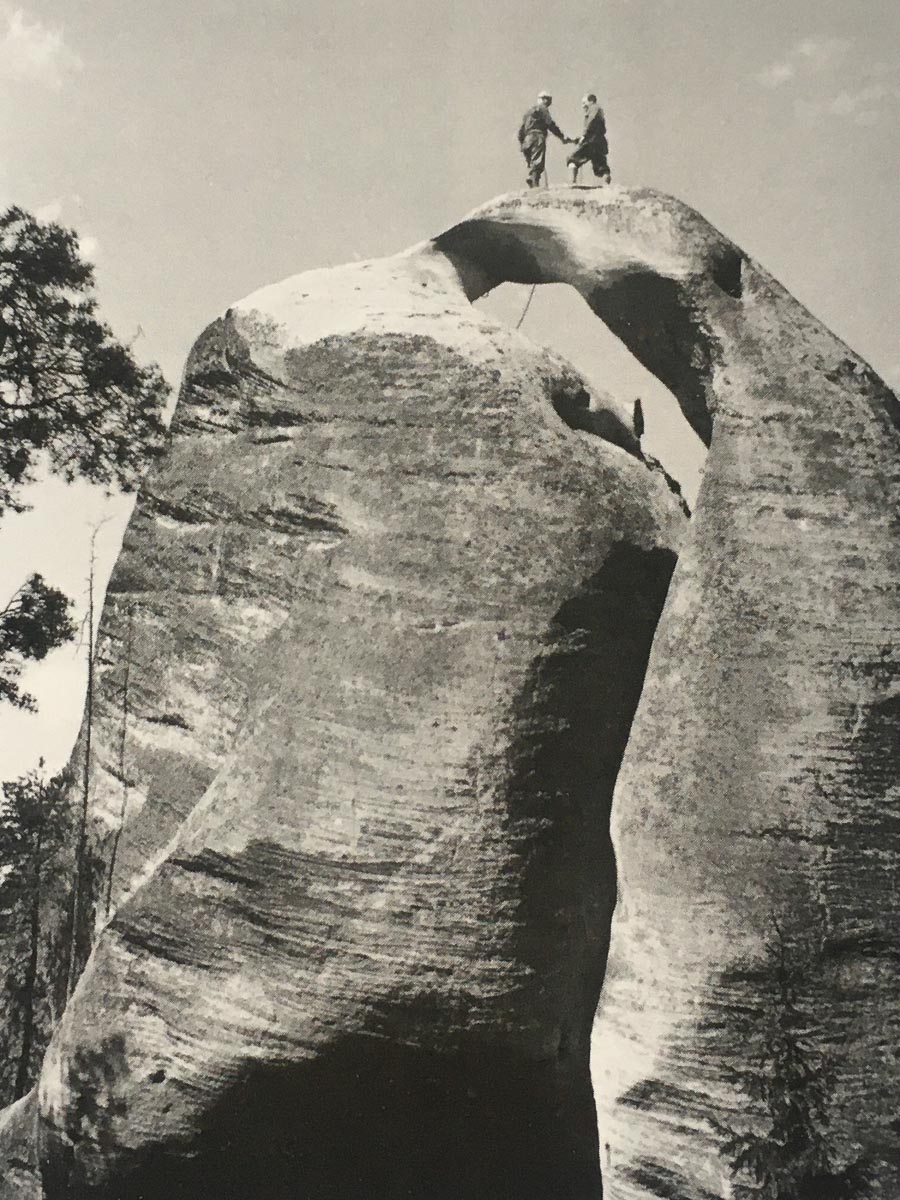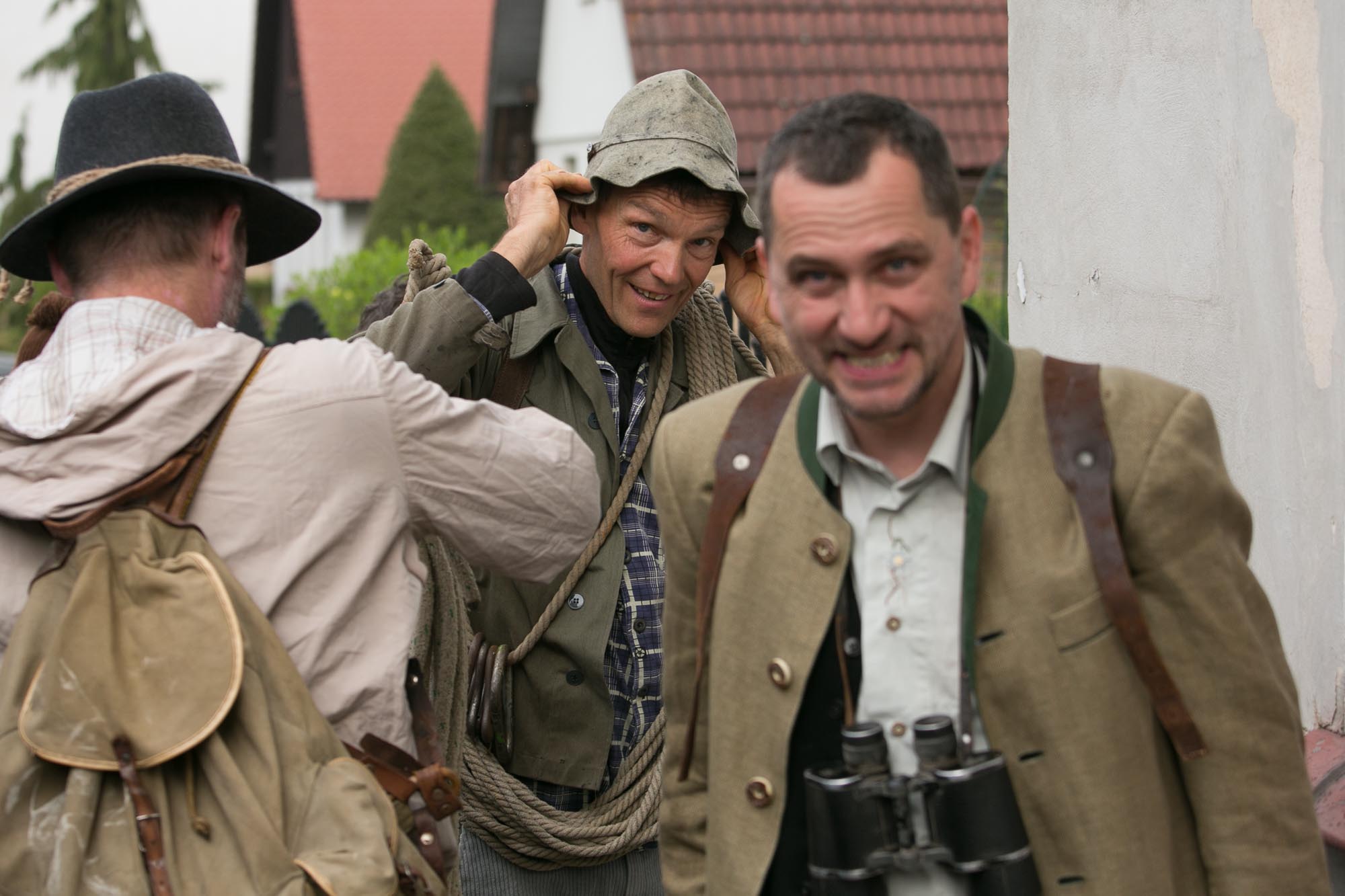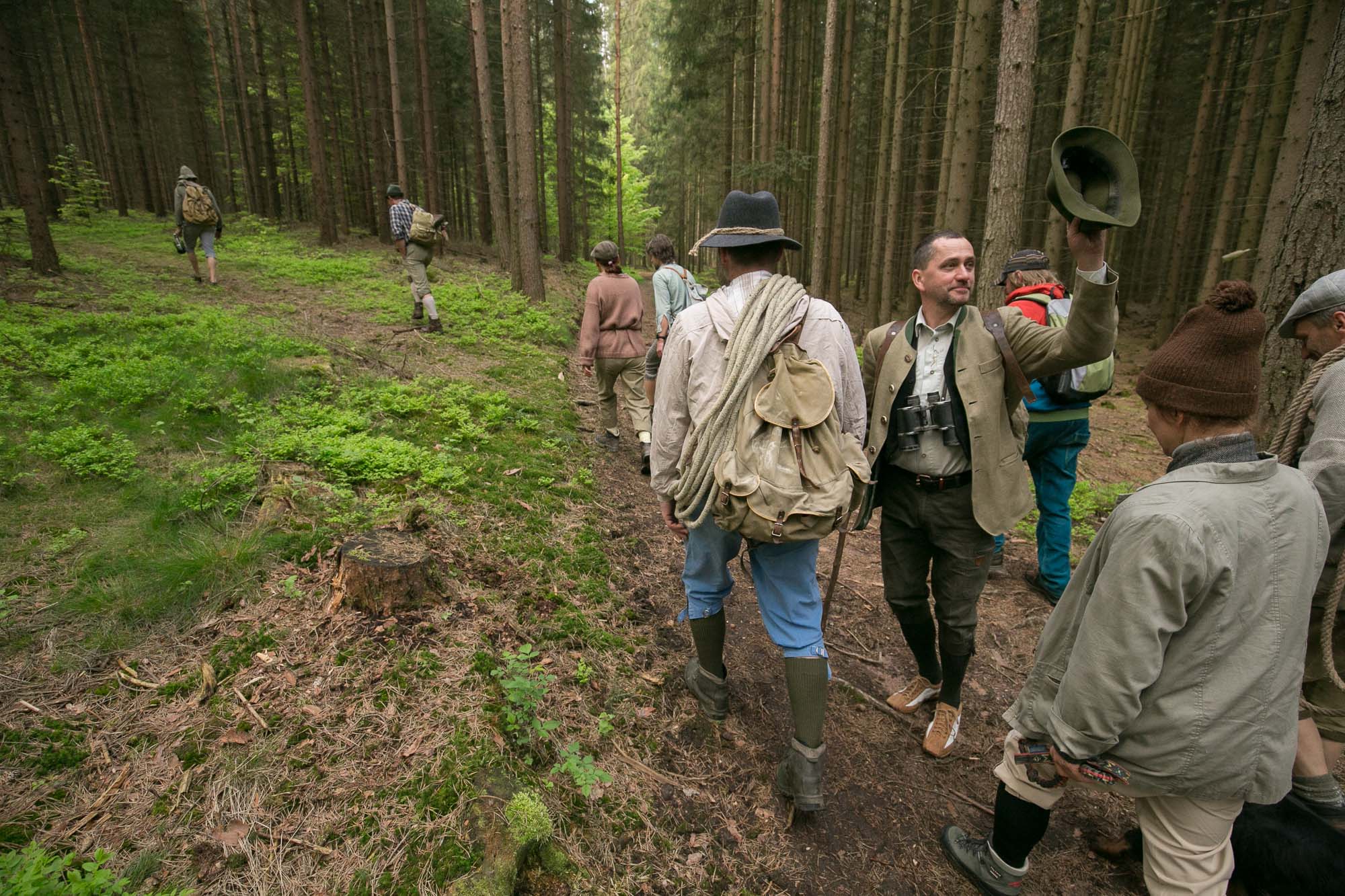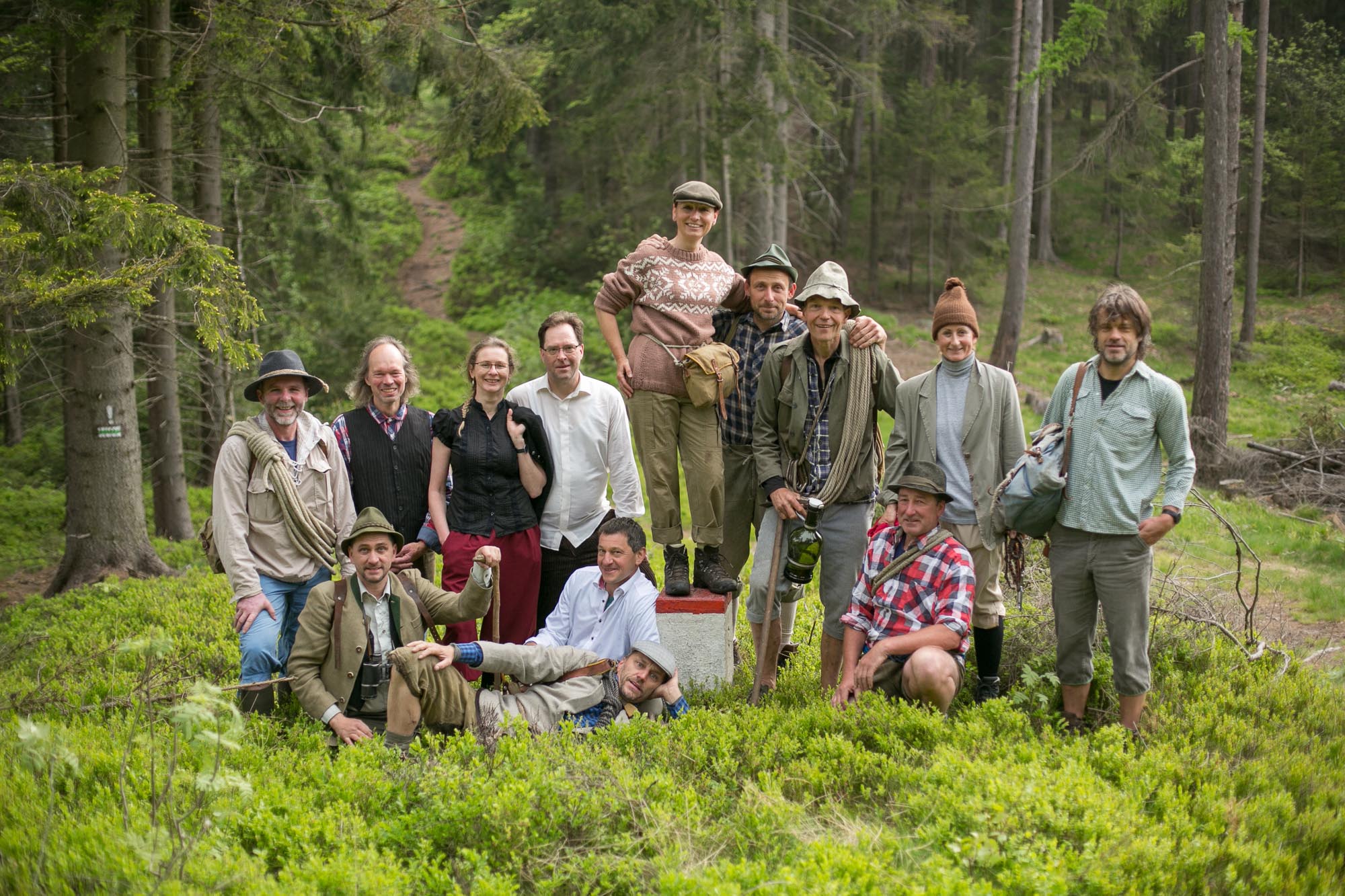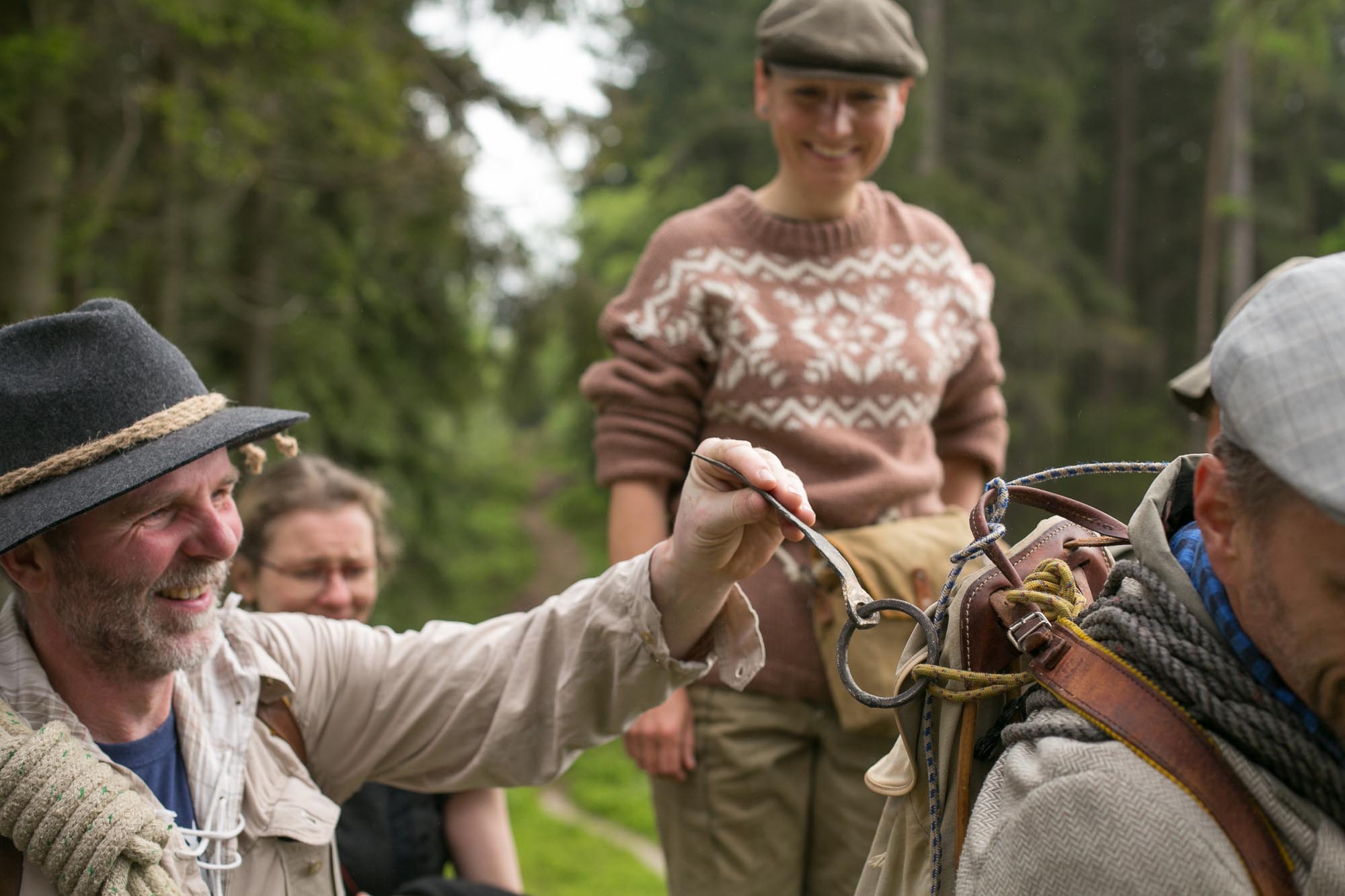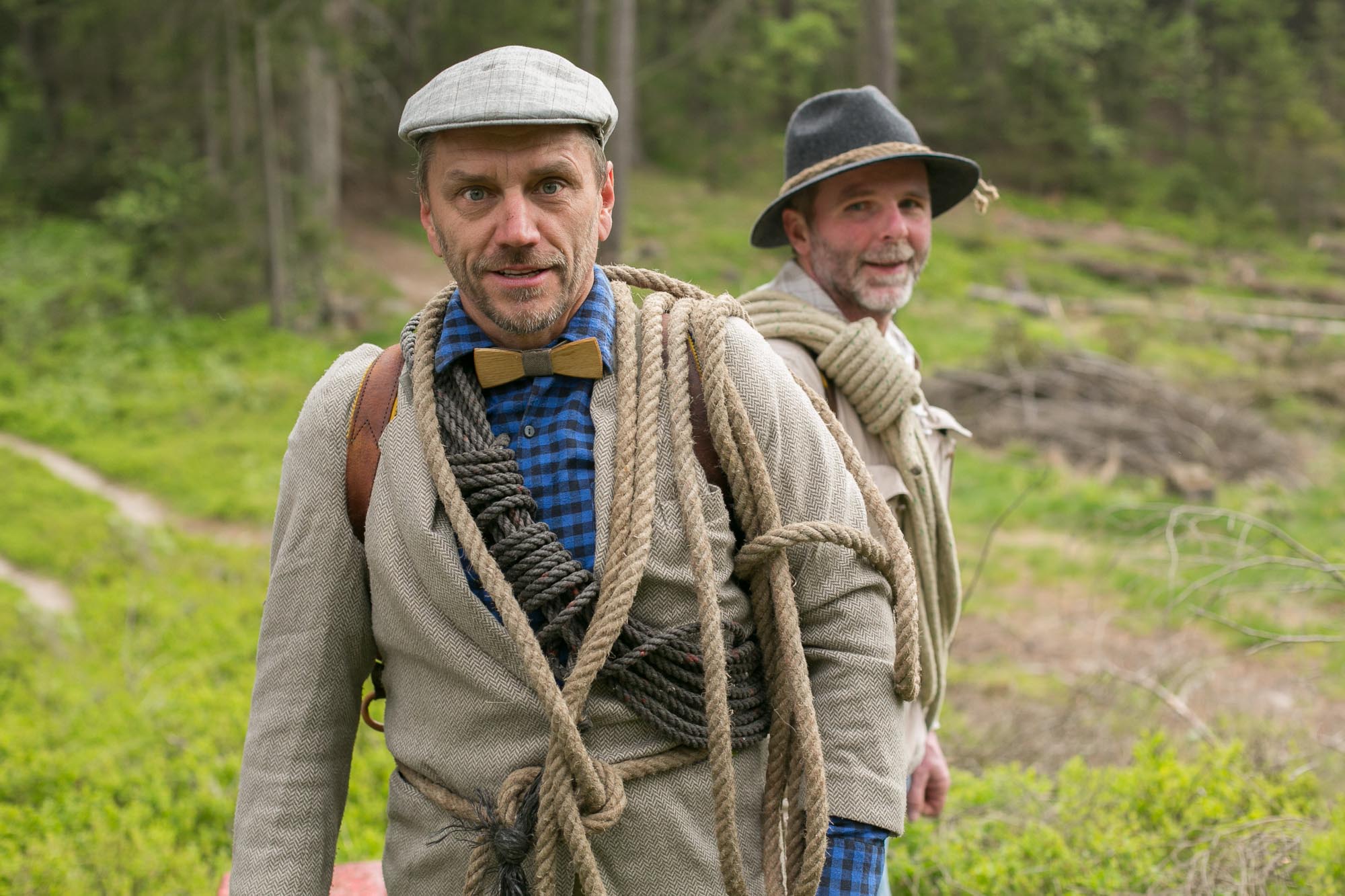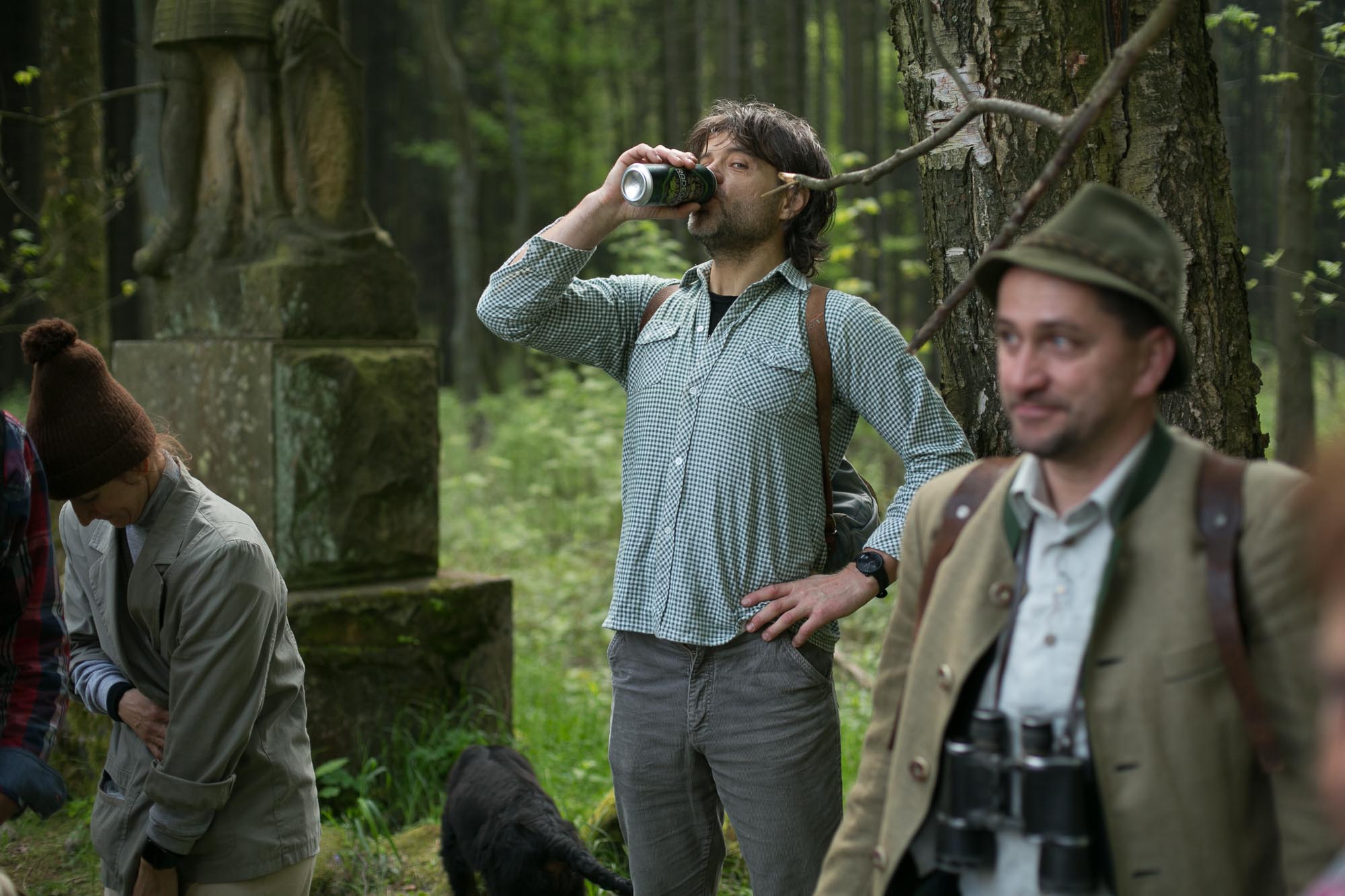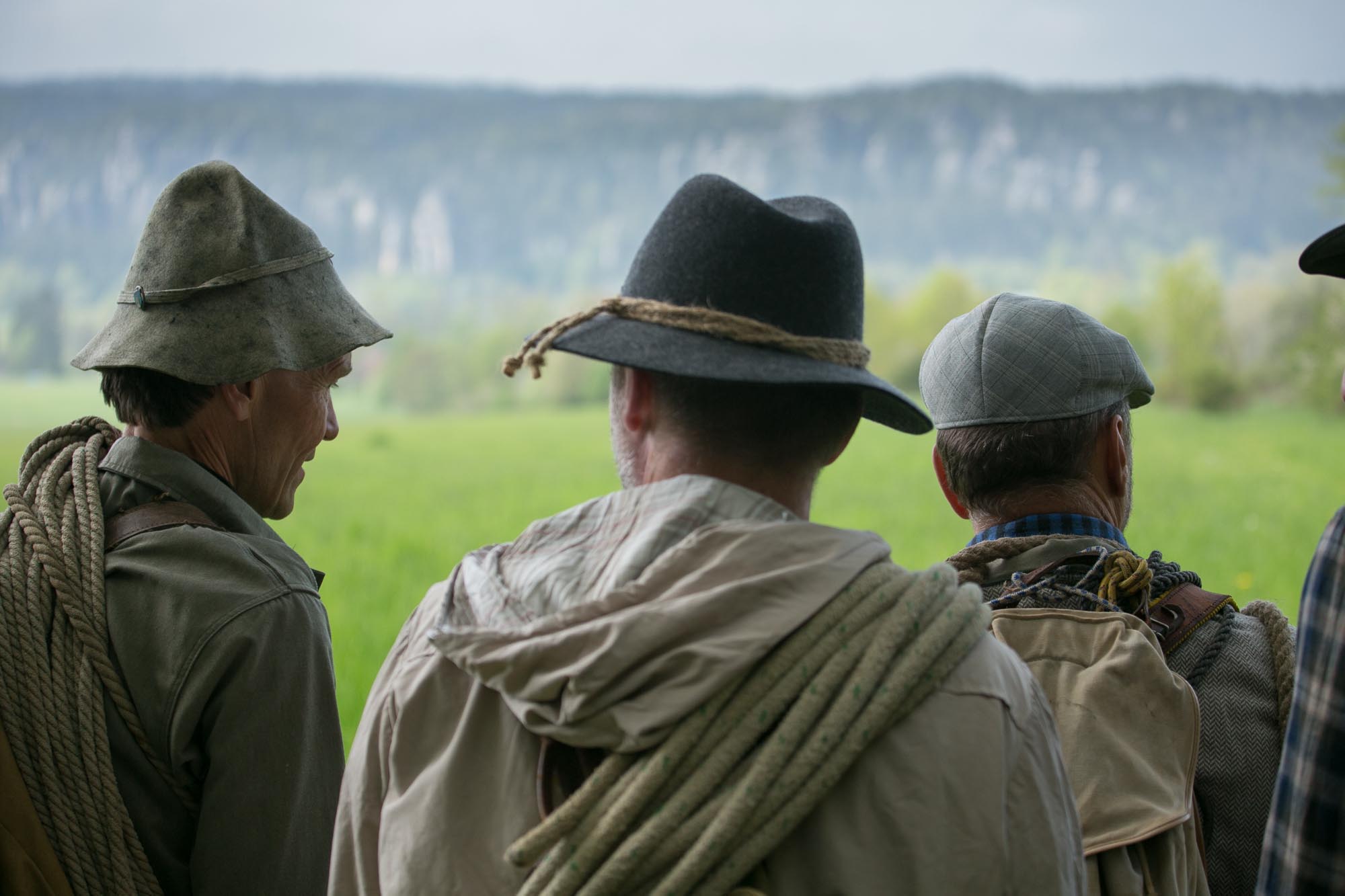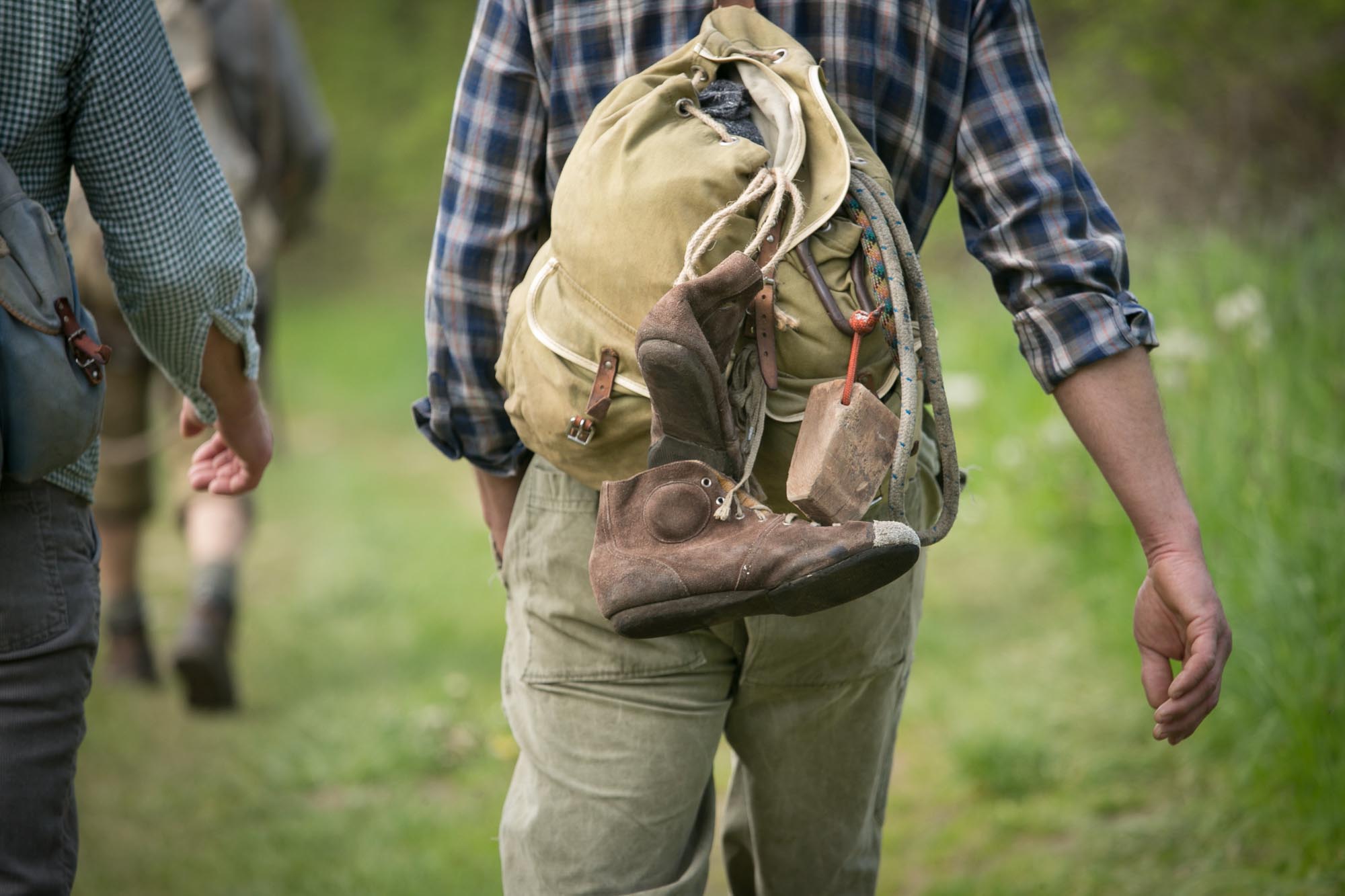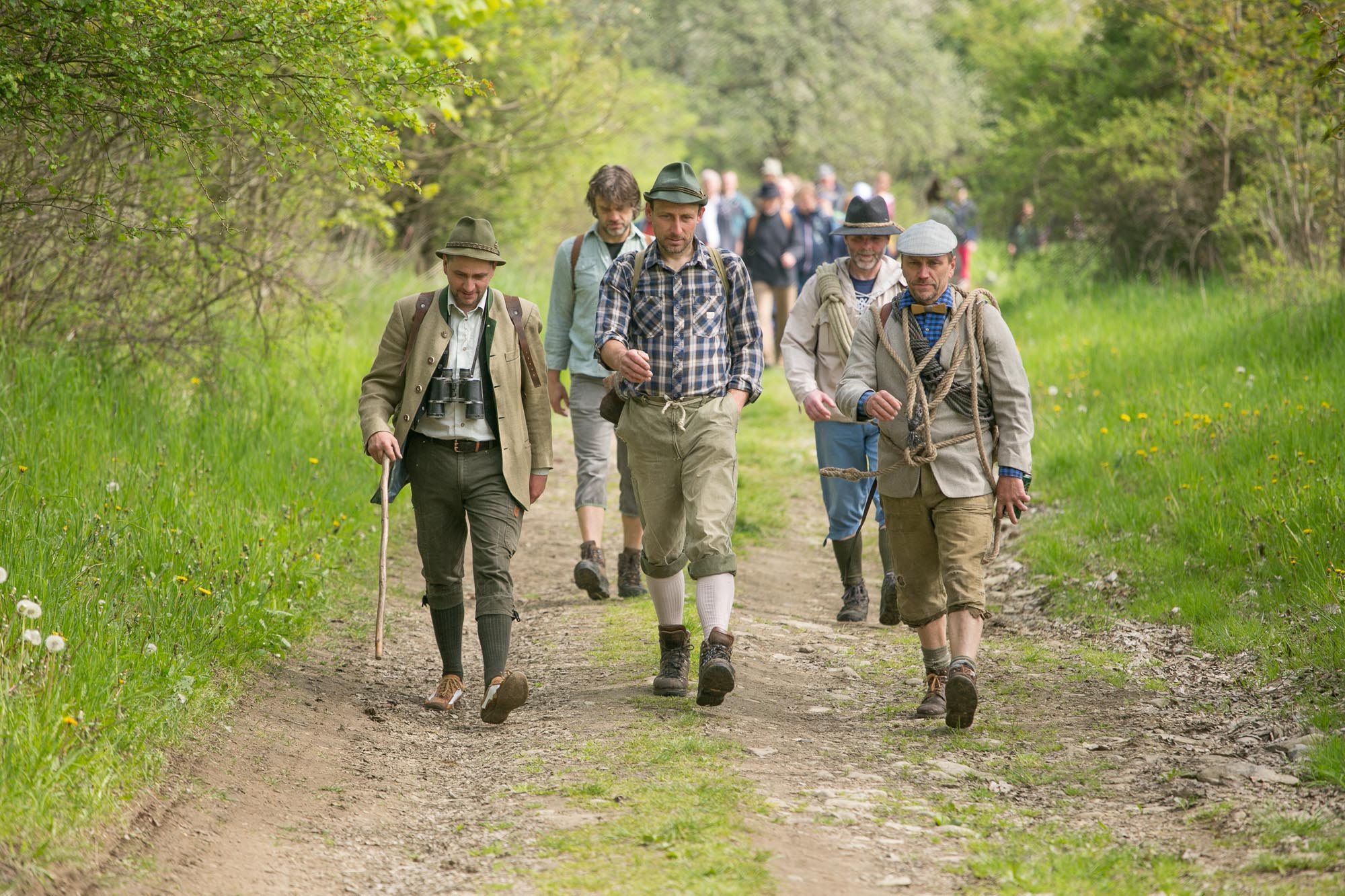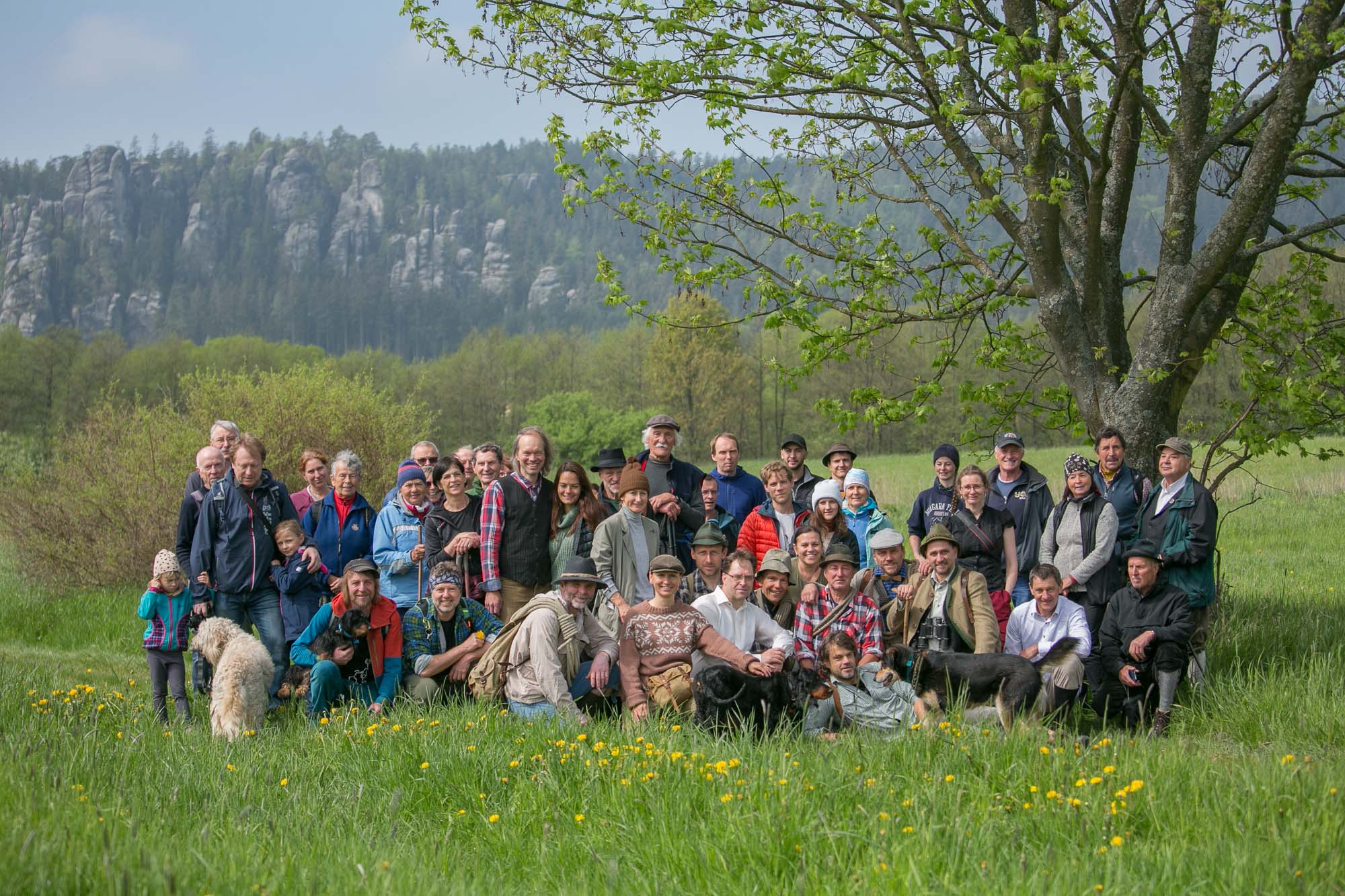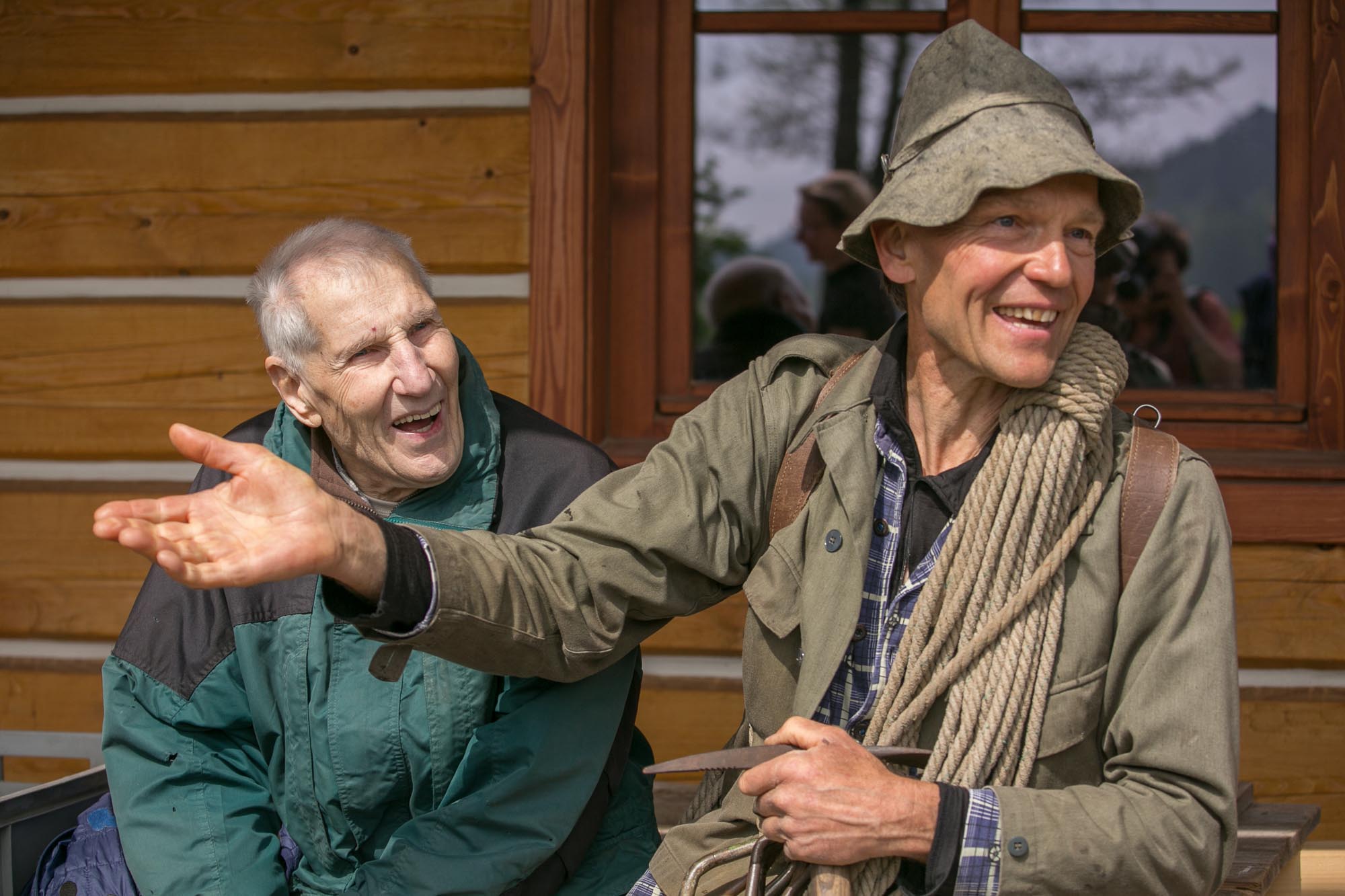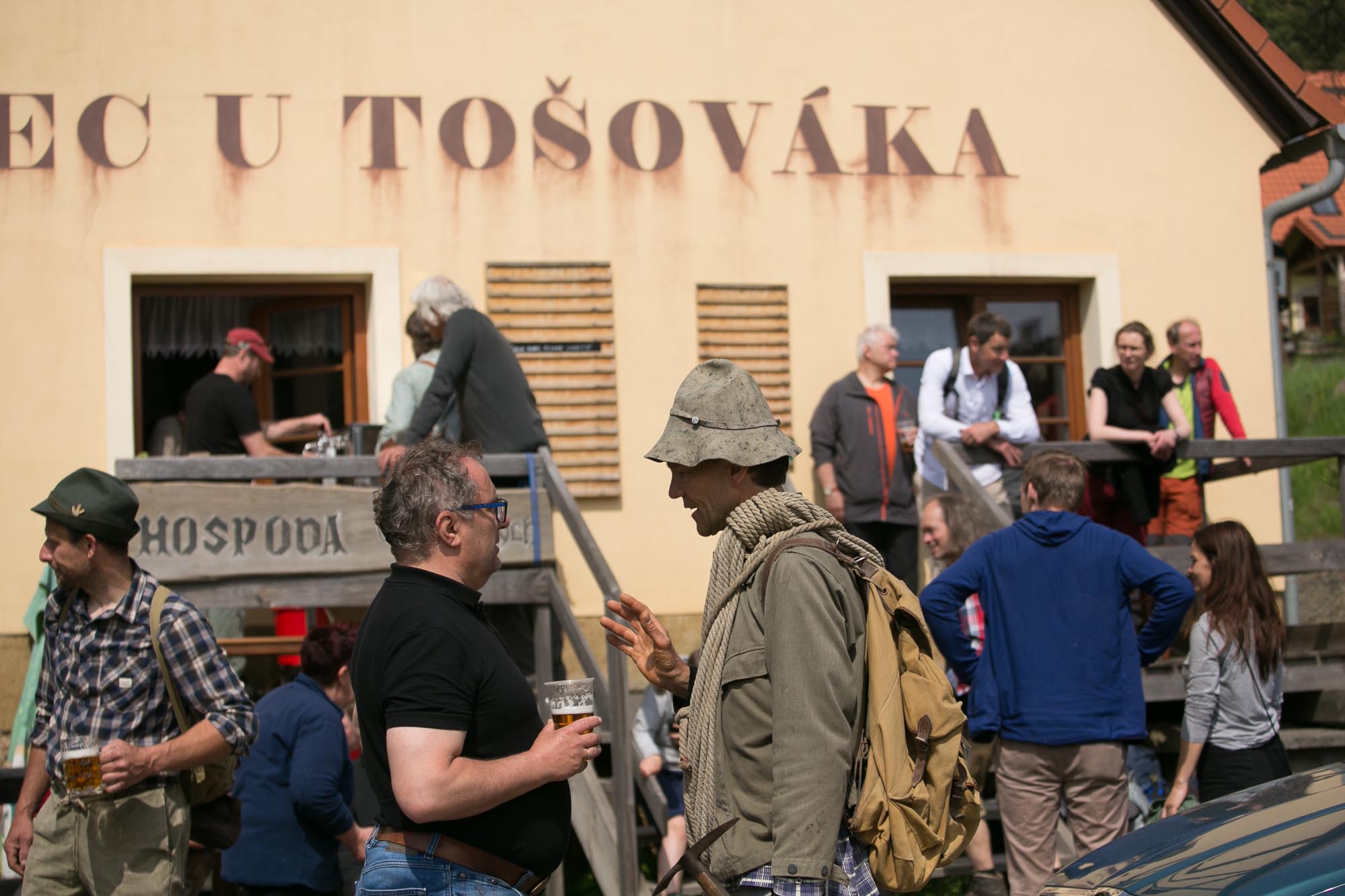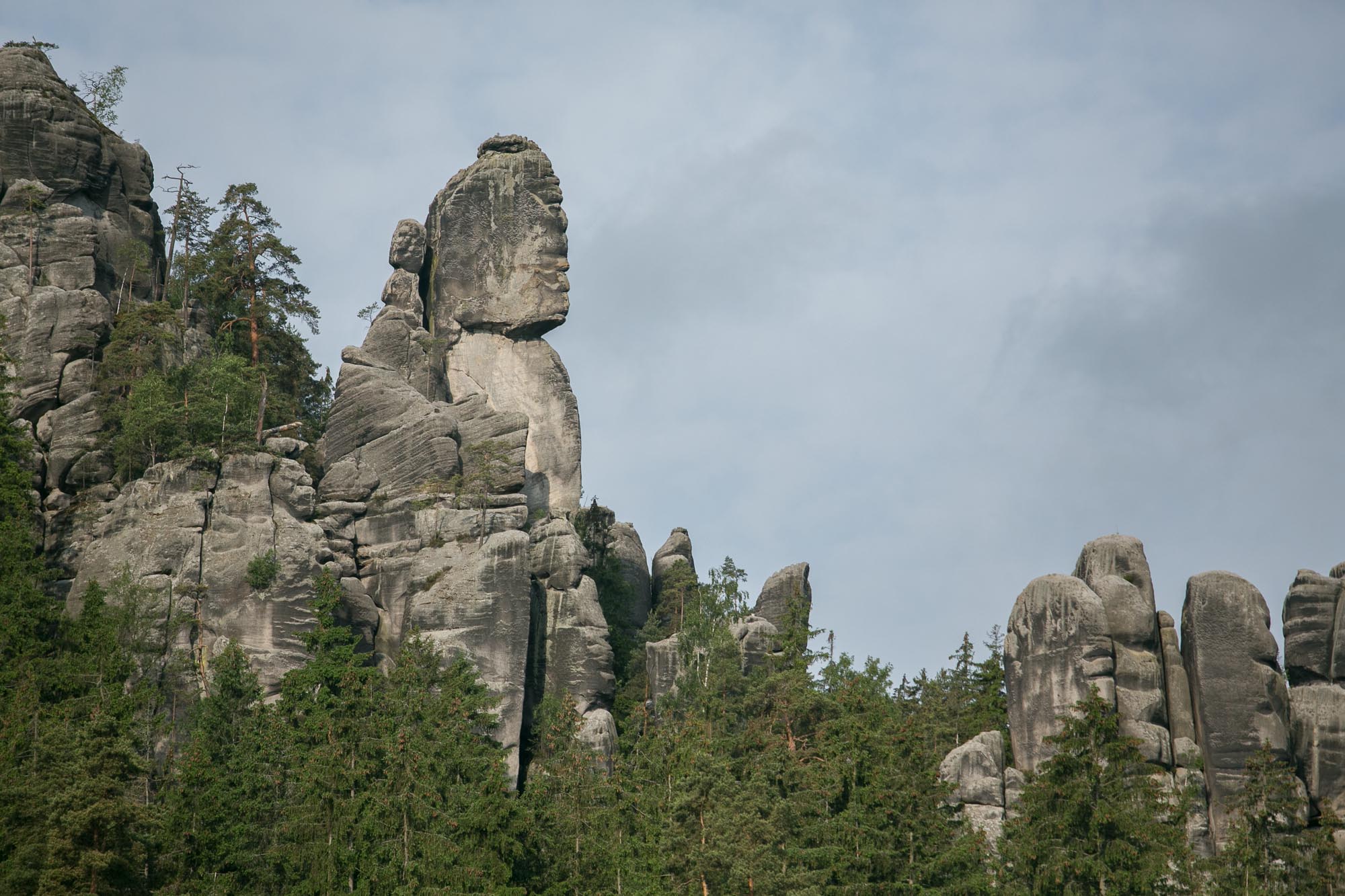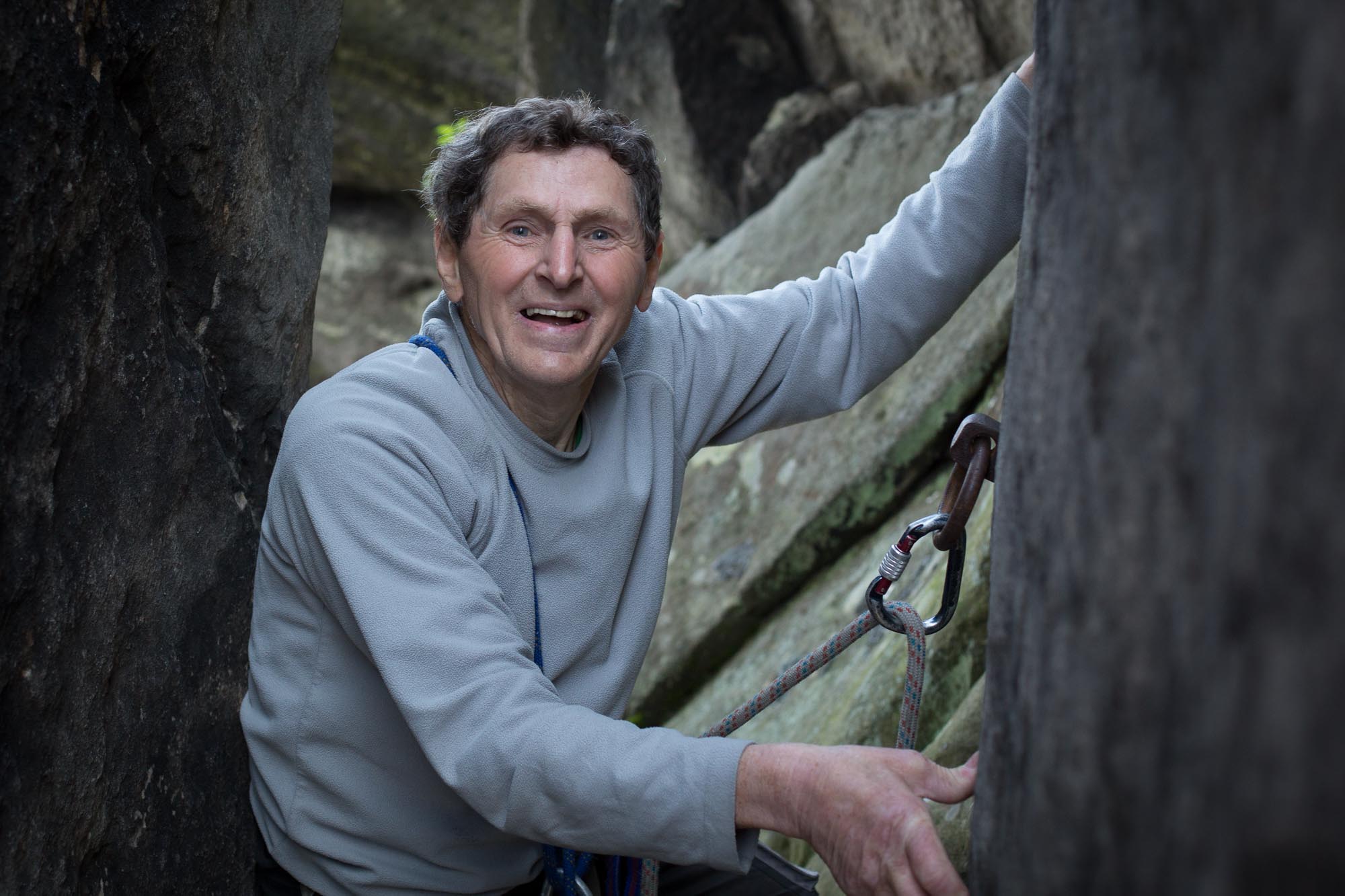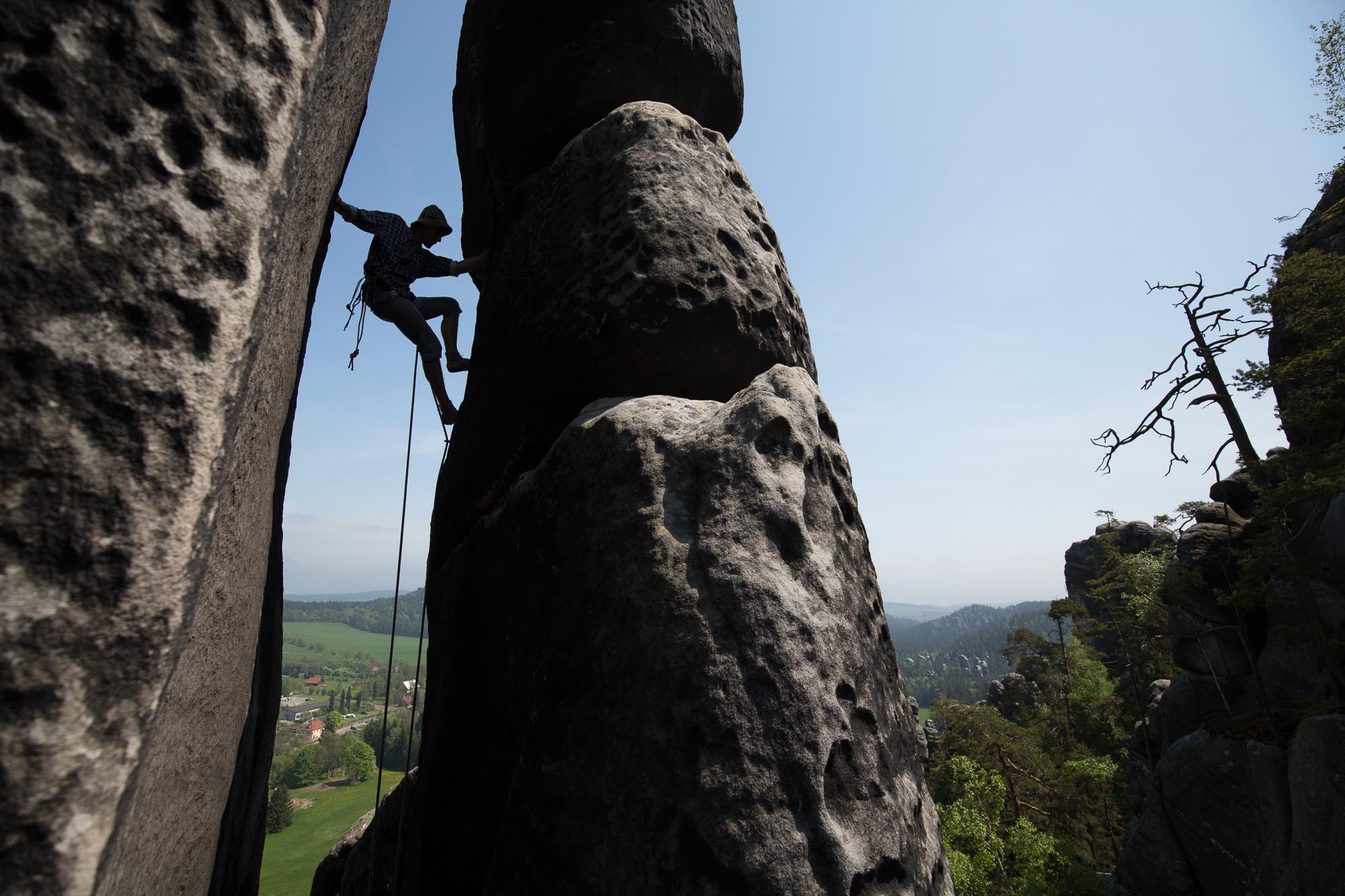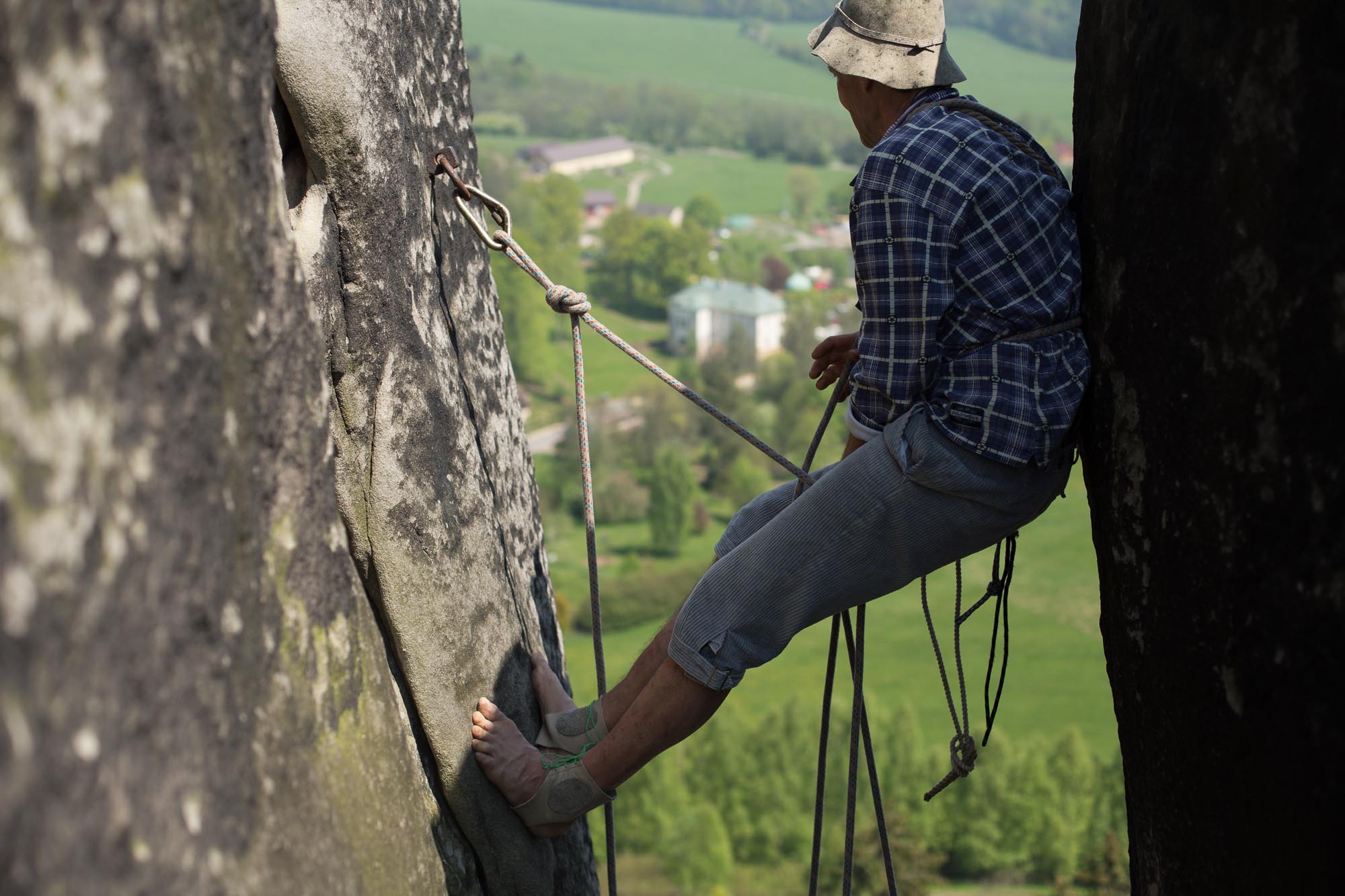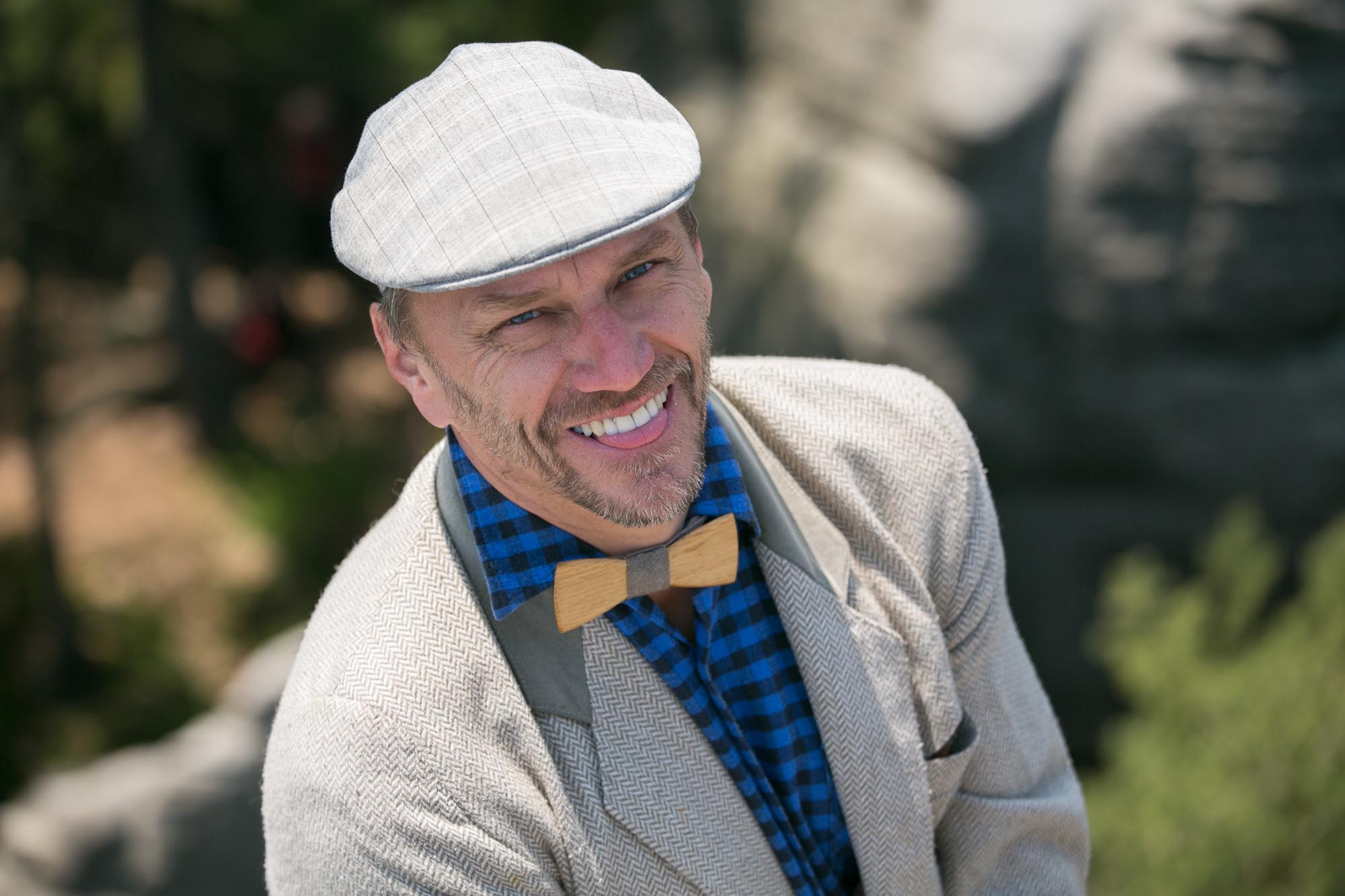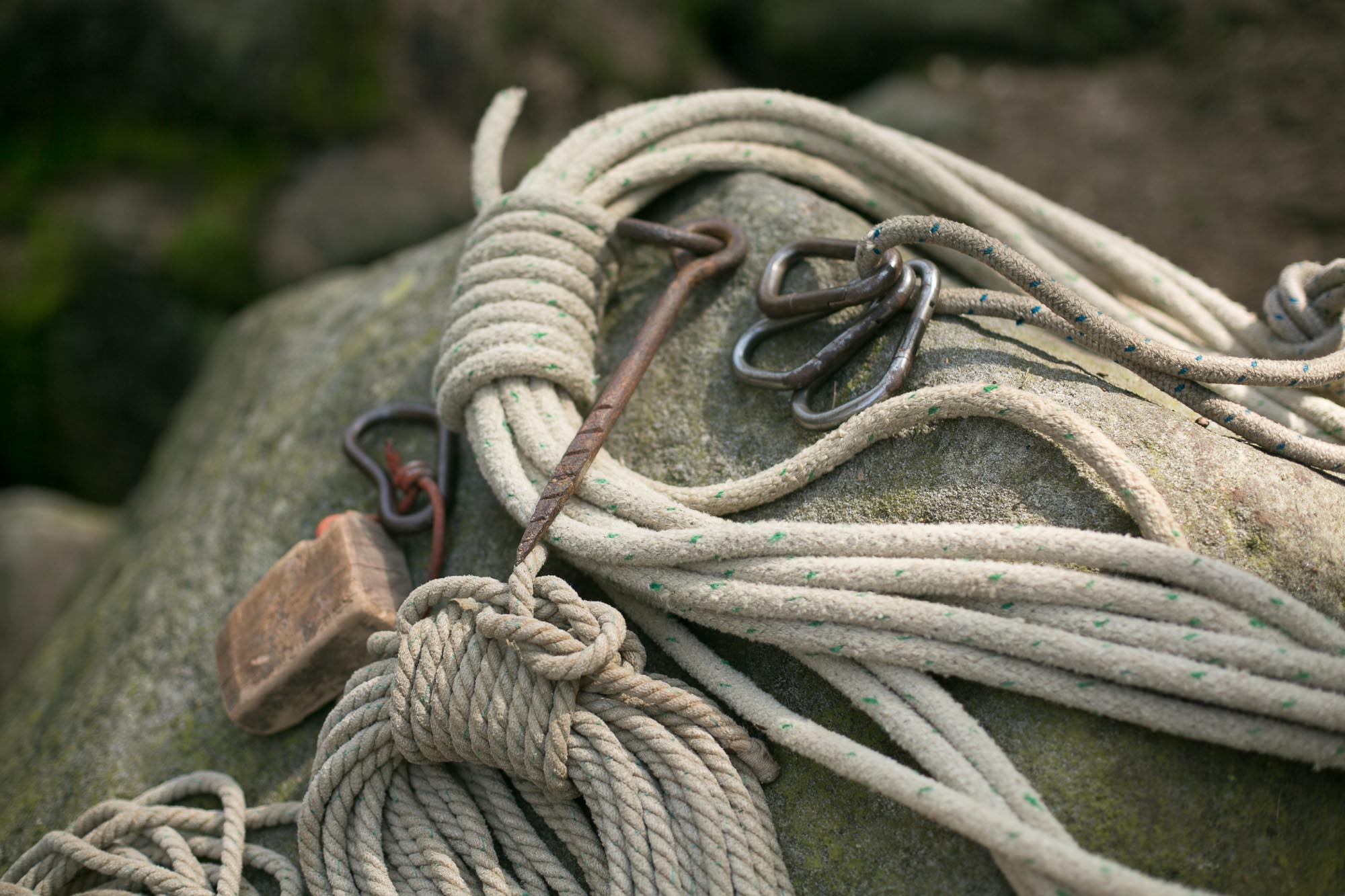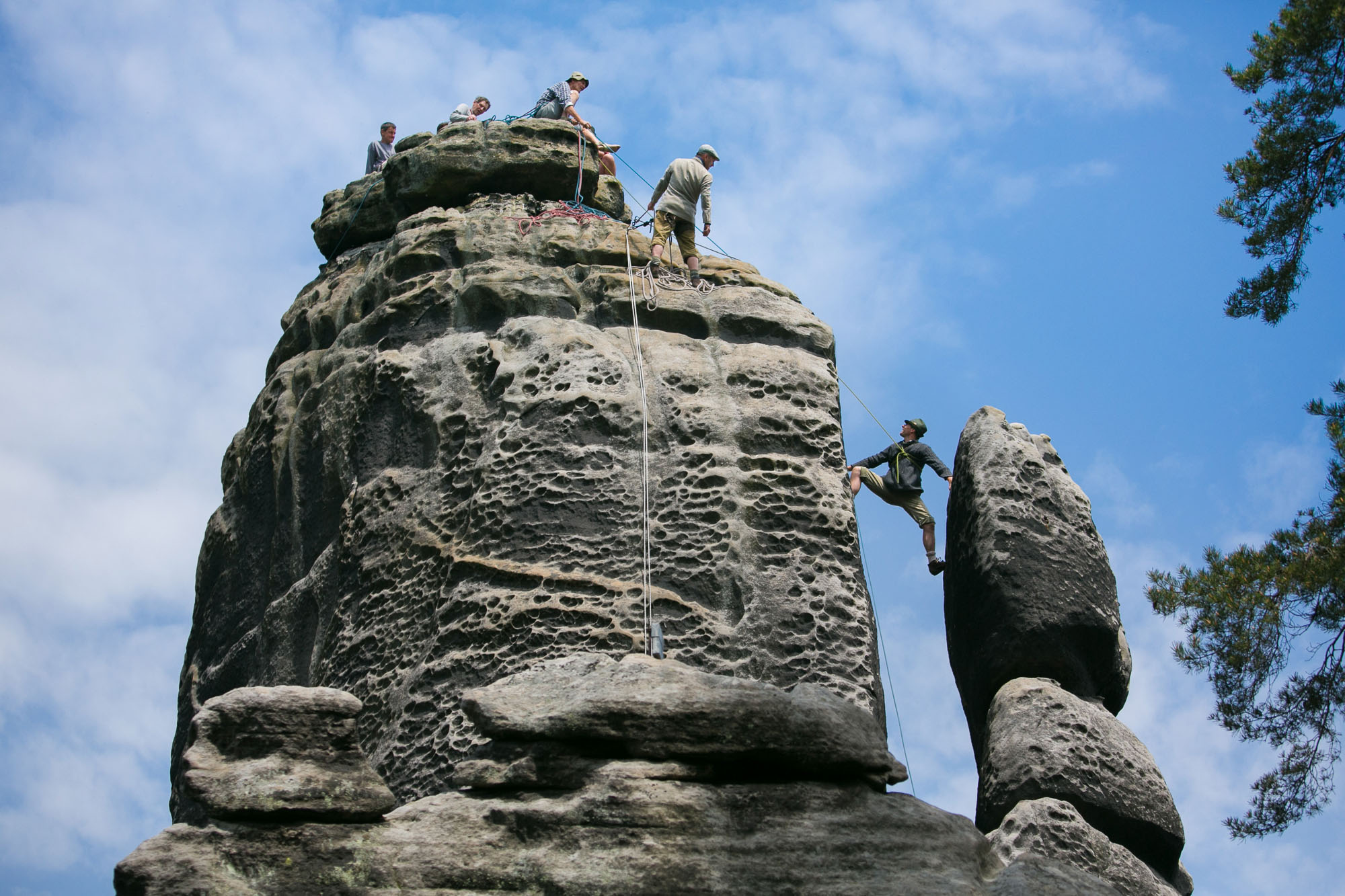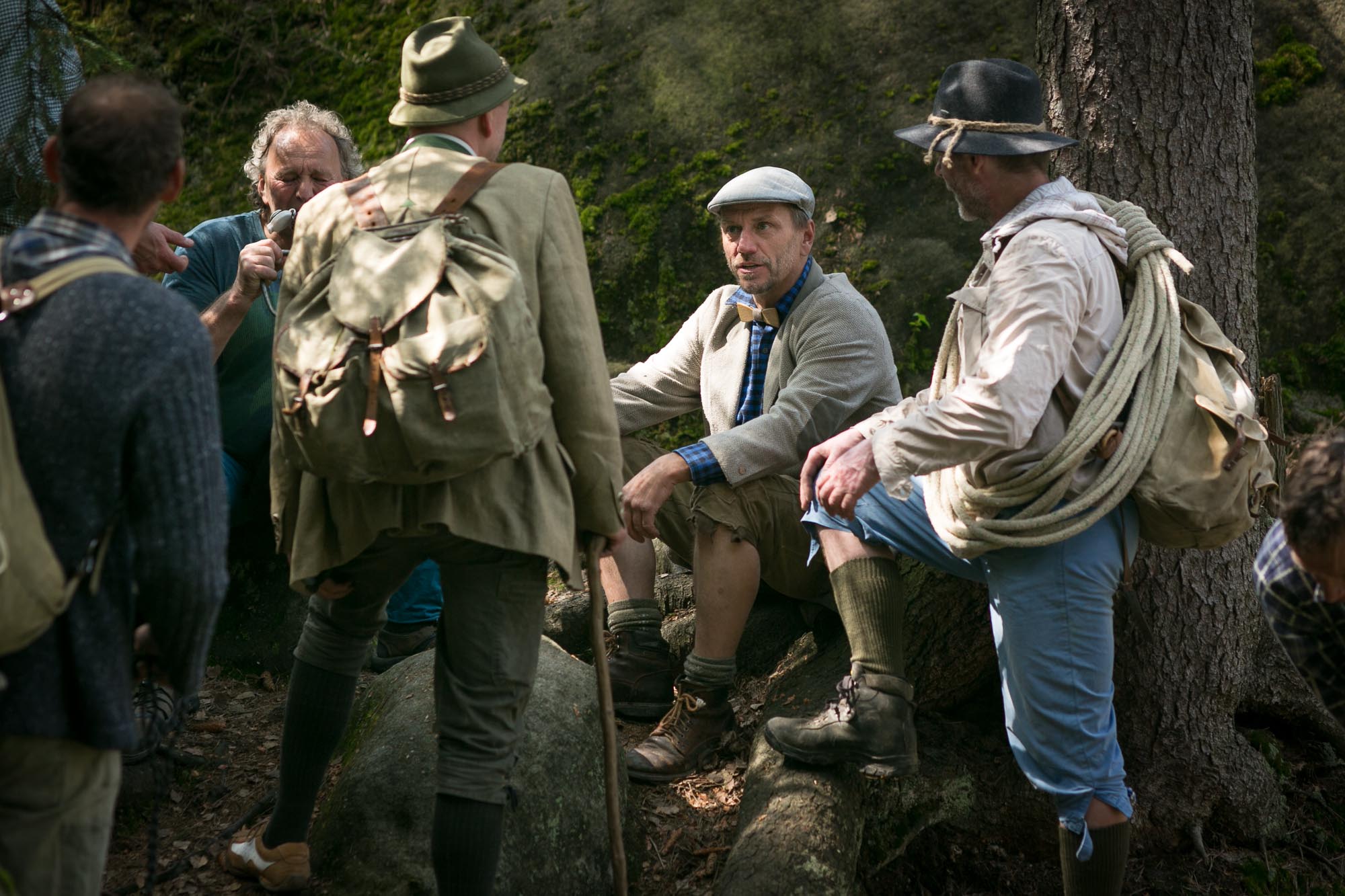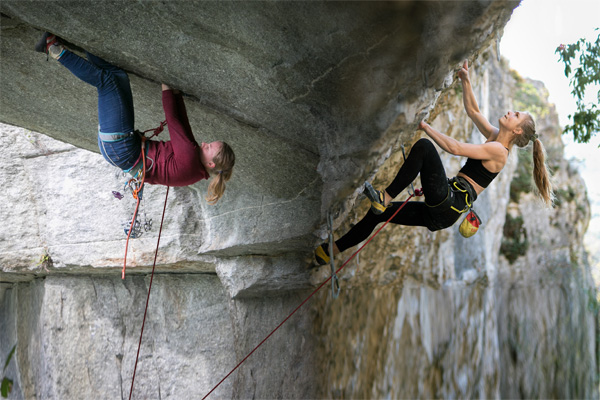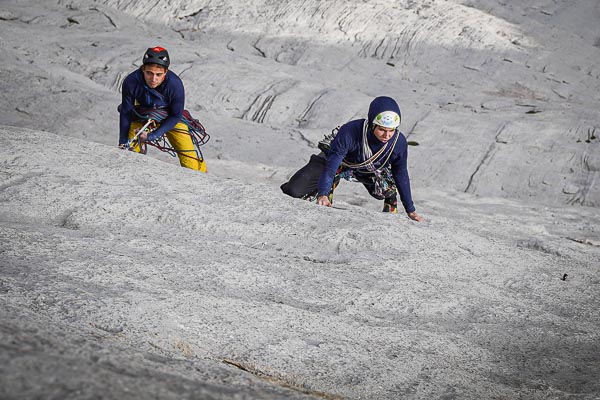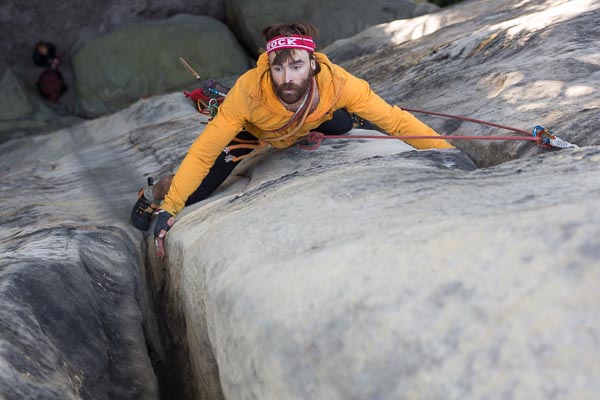KING TOWER
1923: They came from Poland, which was not yet Poland. And they climbed the King, who was not yet the King, but the Christmas Tower. Delve for a moment into the history of the first Adršpach Tower, which was not even the first. You can’t argue with history…
A HARMLESS ACT
History repeats itself in cycles. When a Saxon exploration team climbed the King, the first rock in Adršpach, in May 1923, a lively party broke out under the tower. According to the book Vysoká hra, the Saxons’ actions aroused the interest of the locals: “The owner of the rocks sent one of his forest guards, who, if nothing else would do, was ordered to shoot the daredevils’ rope. The mountaineers below had a great deal of work to do before they could convince the man that their actions were quite harmless.“
Even in 2023 it had to be explained that climbing was “harmless”. For a while it looked like the Broumov Protected Landscape Area was going to ban the 100-year climb altogether. The King is located in the area of nesting closures, so it was necessary to apply for an exception for the date of May 20. At first it looked bad, but in the end the conservationists gave the go-ahead and a group of no more than 15 people could participate in the climb of the King. The organizers of the meeting had a tough nut to crack — to choose the 15 Czechs and Germans from the many interested people and not to offend or disappoint anyone. However, they managed the situation perfectly and finally a mixed team climbed the King, which was legitimized by a “forest supervisor” at the bottom of the hillside, just like 100 years ago. This time at least without firearms and in a more relaxed atmosphere.
And just like 100 years ago, a group of climbers set out on foot from the Polish village of Chełmsko Śląskie. As far as the ascent of the King itself is concerned, Manfred Vogel, one of the most diligent Saxon first ascenders, climbed to the the first ring, Andy Stephan, who loves Ádr since the end of the 80’s and has learned perfect Czech in that time, continued to the second one and finally Ondra Krecbach as a representative of Czech climbers and the famous Krecbach family climbed to the summit. The order of the climbers was spontaneous, but in a metaphorical way it also reflected the development of climbing in Ádr — the Czech climbers built their performance on the shoulders of the Germans, who were the first to climb here and basically brought sandstone climbing from Saxony. We talked about this first period with Pavel Lisák, historian of climbing in Adršpach and author of the aforementioned High Game. Read below the video.
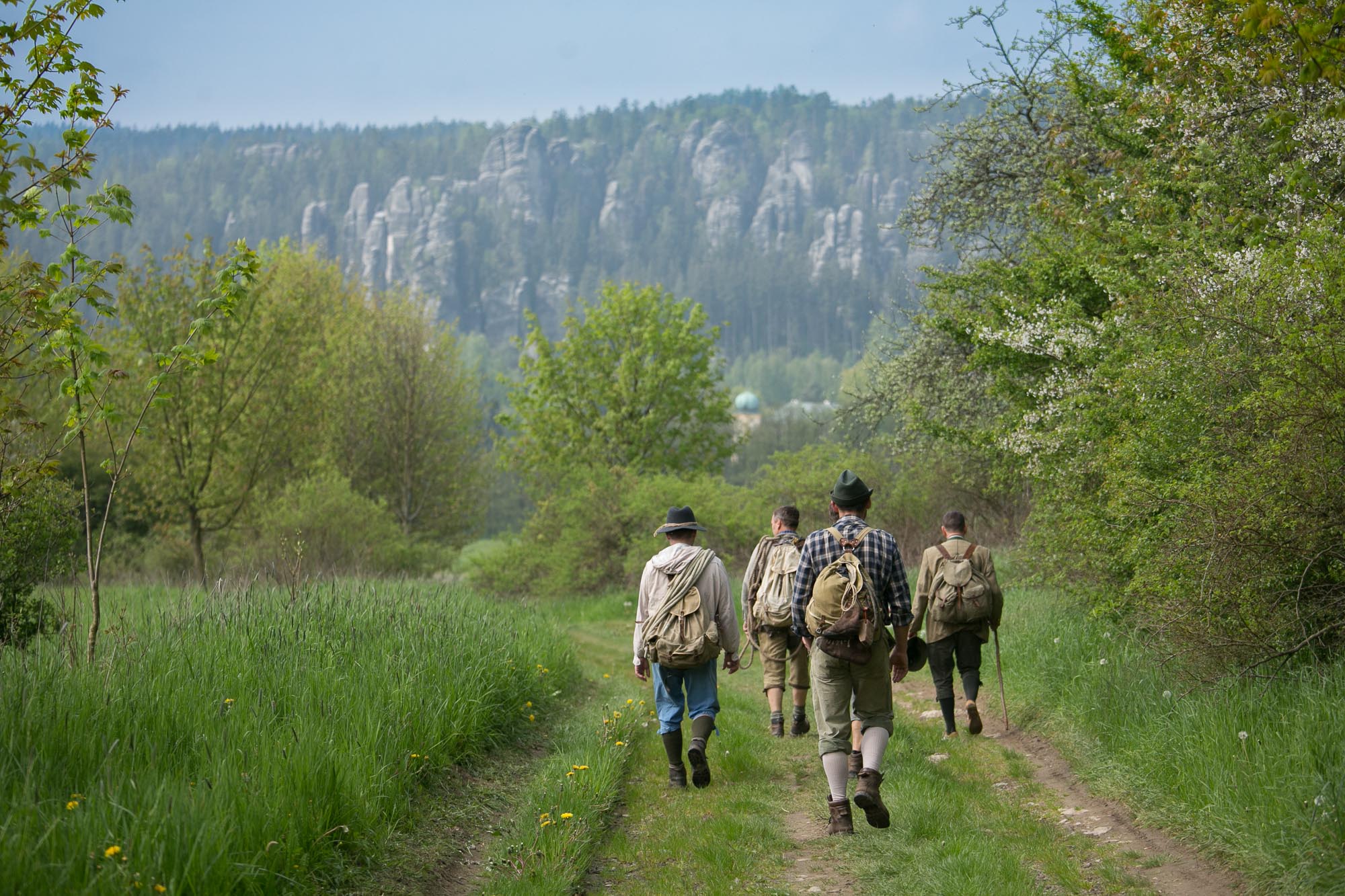
How was the CENTENARY ASCENT OF THE KING?
– Ondra Krecbach a Andy Stephan speaking –
GERMAN METICULOUSNESS
INTERVIEW WITH PAVEL LISÁK
Why did climbers from Saxony take the train to Chełmsko, when there was already a line to Adršpach at that time?
In 1923, Chełmsko was in Prussia, so they rode on its territory almost to the border. Poland’s borders had moved a lot to the east before the Second World War. So the climbers at that time chose the cheapest option — they had a lot of inflation then, so they basically had no money. Later on, there were cases of them cycling from Dresden…
Where did you actually get the information about these pioneers of climbing in Adria?
The biggest advantage was that there was a lot of written material preserved about them — German consistency was already in place then. Each club kept a travel diary where they wrote down the trips of all the members. Even if they went privately with three people, they wrote it down. And those diaries are quite well preserved in the Dresden archives. So one could draw from that and then also from the private diaries. After the First World War, articles about mountaineering also appeared in magazines, from the 1920s onwards, for example in the periodical Fahrtgesell or a little later in the magazine Bergsteiger.
Is it possible to say who were among the main characters at that time?
In the period of the first ascent to the King it was certainly Otto Dietrich, and with him two more people would have to be named, namely Wilhelm Fiehl and Otto Rülke. These are just the first ascendants of the Lovers and the Mayors. They came here the most — Fiehl was here maybe eight times. Otherwise, there were more solo climbs by individuals, for example the most famous Fritz Wiezner climbed the Polar Bear and the Rock Crown in one trip.
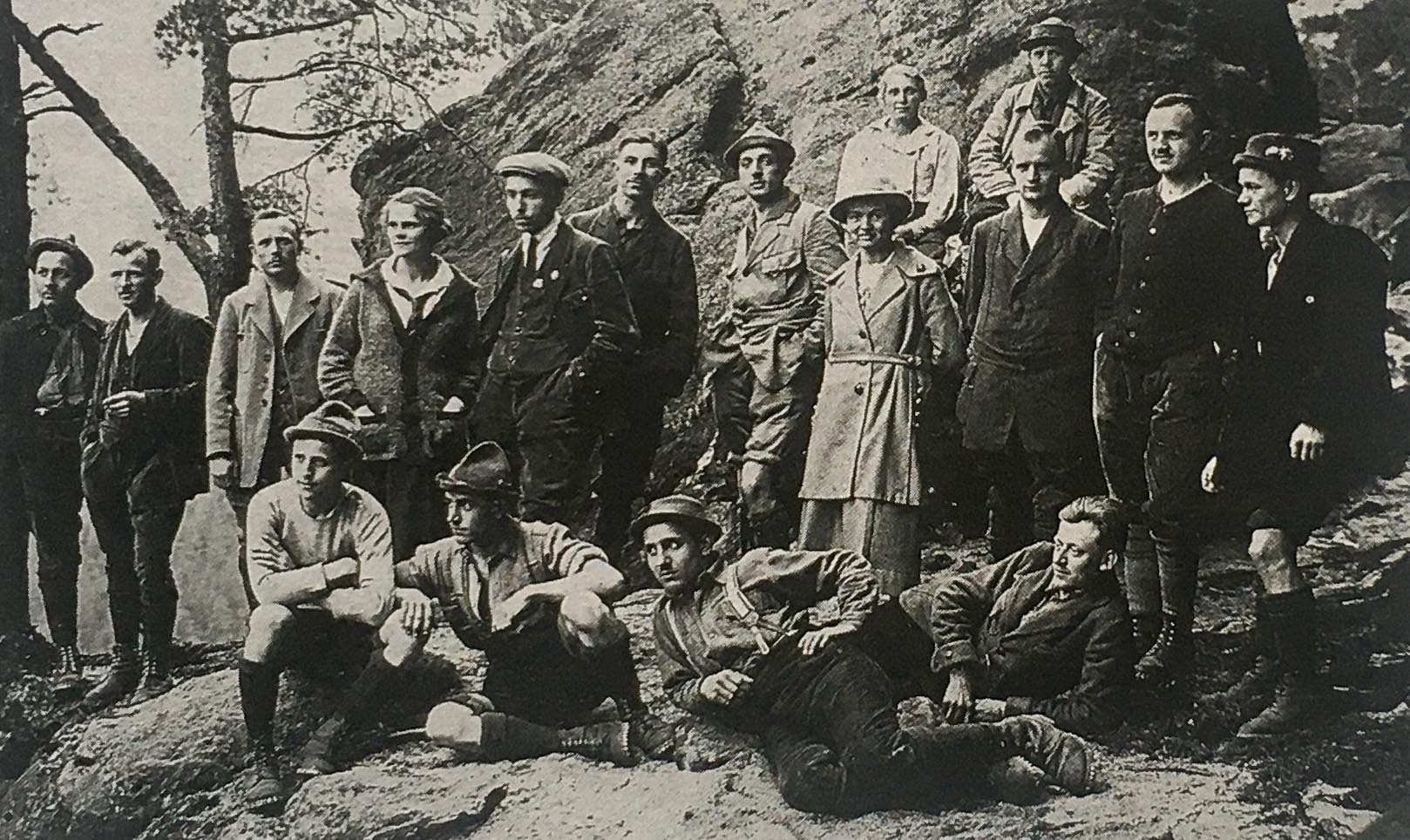
FREE ON THE SIDELINES
How were these early explorers perceived by the local people?
The local newspapers tell us. The Saxons had a bad experience with Hruba Skala, where the locals even shot their rope after rappelling. It must be said, however, that they made mischief with each other there, which stemmed from the unsettled relations between our peoples. For example, when the Germans climbed the Dragon Tower, they raised the tricolour flag there. The Czechs couldn’t shoot it down, so they ended up using wedged beams… Some postcards from the 1920s even show the beams. On the other hand, visitors were quite welcome in the Broumov region. A local newspaper article said “how amazing it was that they had climbed the Starostova and the operator of the mortar at Ozvěna that day refused to shoot, lest the climbers on the tower accidentally get scared and something happened to them.” The very first party that came to climb the King was even received at the Adršpach castle by Baron Josef Emanuel the Magnificent himself. The climbers sang to him and he allowed them to continue climbing the next day.
What was the ratio of Czech and German speakers in Adršpach at that time?
In 1921, according to the census, Adršpach had 1449 inhabitants. Only a tiny fraction of the inhabitants claimed Czech nationality at that time — the postman, the station attendant, probably the gendarme and their families were Czech, and that was about all. Before the Second World War, there were hardly any Czechs in the whole Broumov region.
Can you please remind us what was the first purely Czech ascent?
It was made by a group from the Czech Tourist Club, it was in 1935 and it was made by Josef Janeba, M. Jedlička, R. O. Bauše and D. Jedličková. They were followed by local climbers, which were Germans again. The Teplice climbers succeeded, for example, in the first ascent of Bishop on Bisik or repeating some routes in Ádr. The real Czech climbing started in 1944 on Ostaš, where a group of Náchod climbers got together. But they could only climb on the Lower Ostaš, because the Upper Ostaš was already in the Sudetenland, where they could not go. They couldn’t go to Ádr either. They only got there once on a special pass and once on the sly, to repeat Milenci tower. Until 1944, we know of only three Czech first ascents: the Džbán in Adršpach and the Mušle with Větrná on the Broumov Walls.
It is said that before the King, another tower was climbed in Ádr. Do you know what it was?
Yes, it is documented that a tower was climbed before the King. But it is not known for certain what it was. The description makes it look like the Wind Tower, as they came without information the same way around St. Wenceslas… Adršpach opened up before them. At the castle they discovered that there was an entrance fee, which they could not afford, so they went to the edge of the rock town. At that time, according to the postcards, the Old Castle Hill had been cleared, so they saw beautiful towers there. The second group after them had already started to climb the King, which is already accurately recorded with the date and a detailed description of the event. So it’s better to celebrate 100 years of climbing the King than the “probable Větrná”.
The Germans at that time called the King Pfingsturm, in Czech Svatodušní věž. When and why was the name changed?
The Germans climbed the King during Whitsuntide, so that’s why they named it that. I don’t have any old tourist postcard where the tower is called “King”. But it might have been called that by the locals — the crown on its head… Or Karel Šmíd could have made it up quite sensitively for the first guidebook. He interfered quite a bit in the local nomenclature — he was a great censor, but he was quite aesthetic, so I see it as his contribution. Some of the names would have been awful otherwise.
..
_______________________________

